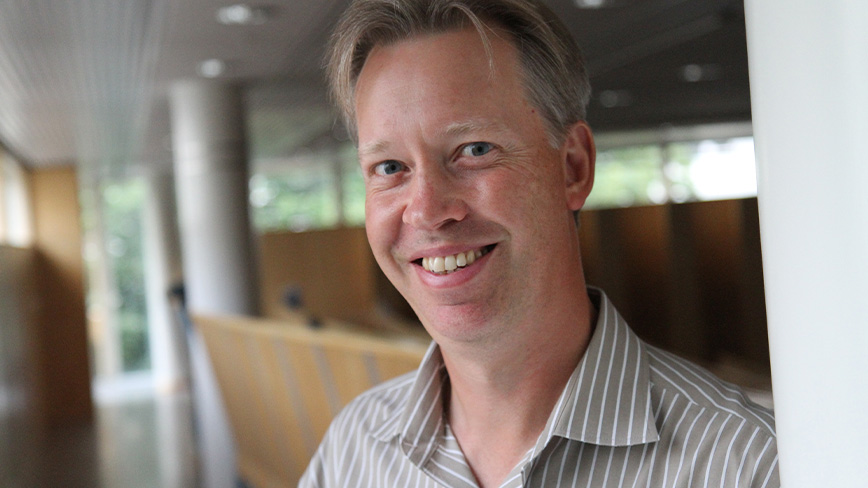EECS admits more students to increase revenue

This is how the school will increase its income from education while developing world-class education for the future. Director of first and second cycle education, Markus Hidell, reflects on his vision for future education and the President’s requirements for balanced finances.
In 2022, not enough students were educated at KTH. The Swedish government funds universities each year based on the expected number of students. Failure to meet this number forces the universities to pay back parts of the funding. This underperformance is part of the decision by President Anders Söderholm to conduct an overhaul of KTH’s finances. Schools have been asked to identify measures to increase in existing educational offerings, without increasing costs.
How to increase education income
“This landed on my desk just a few days after I took over as acting director of first and second cycle education,” explains Hidell. “It set in motion an extensive activity in KTH's First and Second Cycle Education Committee, at all schools and in the University administration.”
The most important activities are linked to efforts to increase revenue and income over the next two years:
“Partly, it is about increasing the revenue already in 2023, and partly about increasing the income in the slightly longer term in 2024. To do so, we need to increase the number of students admitted to our programmes and independent courses while making sure more of them also graduate”, Hidell says.
The most effective way to increase revenue is to admit more students, primarily at the master's level. However, the school have also initiated an increase in places on undergraduate programs and within the range of independent courses.
Hidell stresses the importance of doing this in a sustainable manner: “We must carry out this increase responsibly and maintain the same high quality of the students and the courses we deliver. They cannot be overcrowded.”
The new admission numbers are based on estimates that should compromise education quality or contribute to a worse working environment for teachers, course managers and programme managers.
More students in the programmes
The number of admissions to the EECS master's programme has now increased by approximately 10 per cent, from 750 to 830 students. Examples of such programmes include Embedded Systems, Systems Engineering and Robotics and Distributed Systems.
“Other programmes with high application pressure have chosen to keep the number of places the same because they already have as many students as they can handle. And that is the way it should be.”
Two undergraduate programmes will also be accepting more students. The 5-year engineering programme in Electrical Engineering and the international bachelor’s programme in Information and Communication Technology accepts ten extra students each.
“This is at the request of the programme director. Both programmes have a high and steadily increasing application demand from prospective students.”
Also, the number of incoming exchange students will be slightly more this year, with a focus on trying to recruit more students from the EU.
An incoming exchange student provides as much income during the autumn as a programme student. Another advantage is that it benefits teachers during the spring semester when many students do their degree projects, which we know is extra resource demanding.
“The international coordinators have registered an increasing interest from prospective international students. This has allowed KTH to accept more incoming students than originally agreed with the partner university.”
Ensuring world-class education
“Future Education at KTH” is a change programme designed to ensure that KTH provides relevant and high-quality education also in the future. Led by Joakim Lilliesköld and Per Fagrell, it will run between 2023–2027. Over 2023, frameworks and principles have been created to guide education development.
“Now, we move from formulating principles and anchoring to concrete measures. All schools have developed activities that are in line with Future education,” Hidell explains.
Each school receives a financial contribution of one million SEK from the change programme to carry out the activities. The schools themselves must co-finance with the same amount.
“Some of our proposals are things we intended to do anyway, but we now get an extra boost and focus with the help of Future education.”
EECS submitted several proposals, four of which were selected for the programme. All proposals were required to be innovative and scalable to other activities. This means that once a pilot project has been deemed successful, it should have implications several other areas.
“This is only a first step for activities starting immediately or in the fall. There will be an opportunity to initiate other projects within the framework of Future education.”
